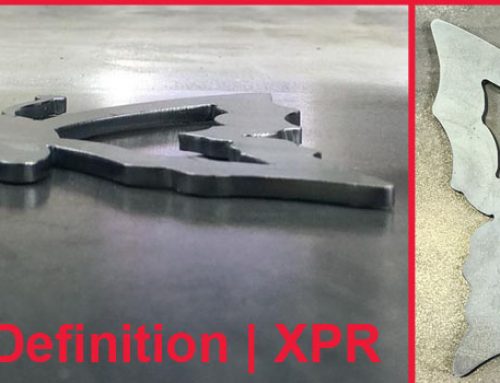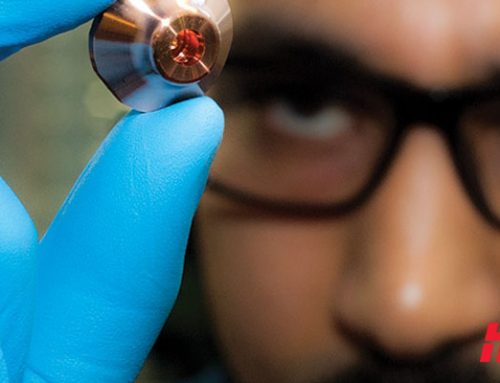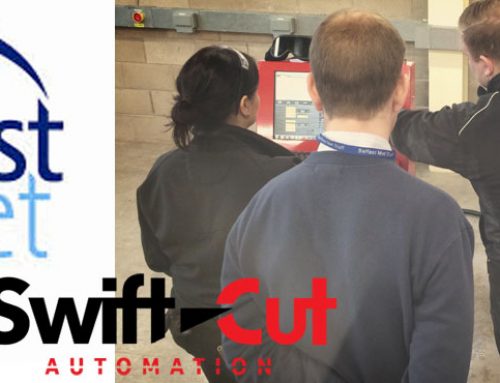Hypertherm plasma vs Oxyfuel
Better cut quality
Dross, heat-affected zone (HAZ), top edge rounding and cut angle are some of the main factors that contribute to cut quality. In two of these areas in particular, dross and heat-affected zone, plasma really out performs oxyfuel, producing a virtually dross-free edge and a much smaller heat-affected zone.
30 mm (1.18 in) plate cut with a Powermax plasma hand torch. The Powermax cut is fairly smooth and dross-free.
30 mm (1.18 in) plate cut with an oxyfuel hand torch. Notice the oxyfuel cut features a rougher edge and sporadic dross.
Dross
The Hypertherm plasma vs Oxyfuel is really quite something as the plasma process uses a high-temperature, electrically-charged gas to melt the metal and blow the molten material away from the cut. Oxyfuel creates a chemical reaction between the oxygen and the steel, creating iron oxide slag or dross. Due to the differences in the process, less dross forms during plasma cutting, and the dross that does adhere is easier to remove. It generally can be easily knocked off rather than needing to be ground down or chiseled off, which significantly reduces the time needed for secondary operations. Less grinding results in more production.
This sample of a 2″ (50mm) part shows the virtually
dross-free cutting capability of the HyPerformance HPR400XD
Heat-affected zone
One of the concerns when cutting metal is the size of the heat-affected zone that is created. Intense heat changes the chemical structure of the metal, turning that heat-affected edge dark (heat tint), warping it, and potentially making the piece unsuitable for secondary welding operations until the heat-affected edge is removed.
Regardless of process, the faster the torch moves, the smaller the heat-affected zone is. Therefore, plasma’s faster cut speeds produce a smaller heat-affected zone that requires less time spent on secondary operations to remove.
The heat tint may also be a concern for some oxyfuel users. Unlike HAZ, which can’t be seen, heat tint shows as a discoloration of the metal. Again, plasma’s faster cut speeds result in a smaller heat tint area. These pictures show the difference between two identical pieces of mild steel – one cut with plasma and the other with oxyfuel. The slower speed needed to complete the cut with oxyfuel resulted in a heat tint area that is 5 times the size of the heat tint on the piece cut with plasma.




